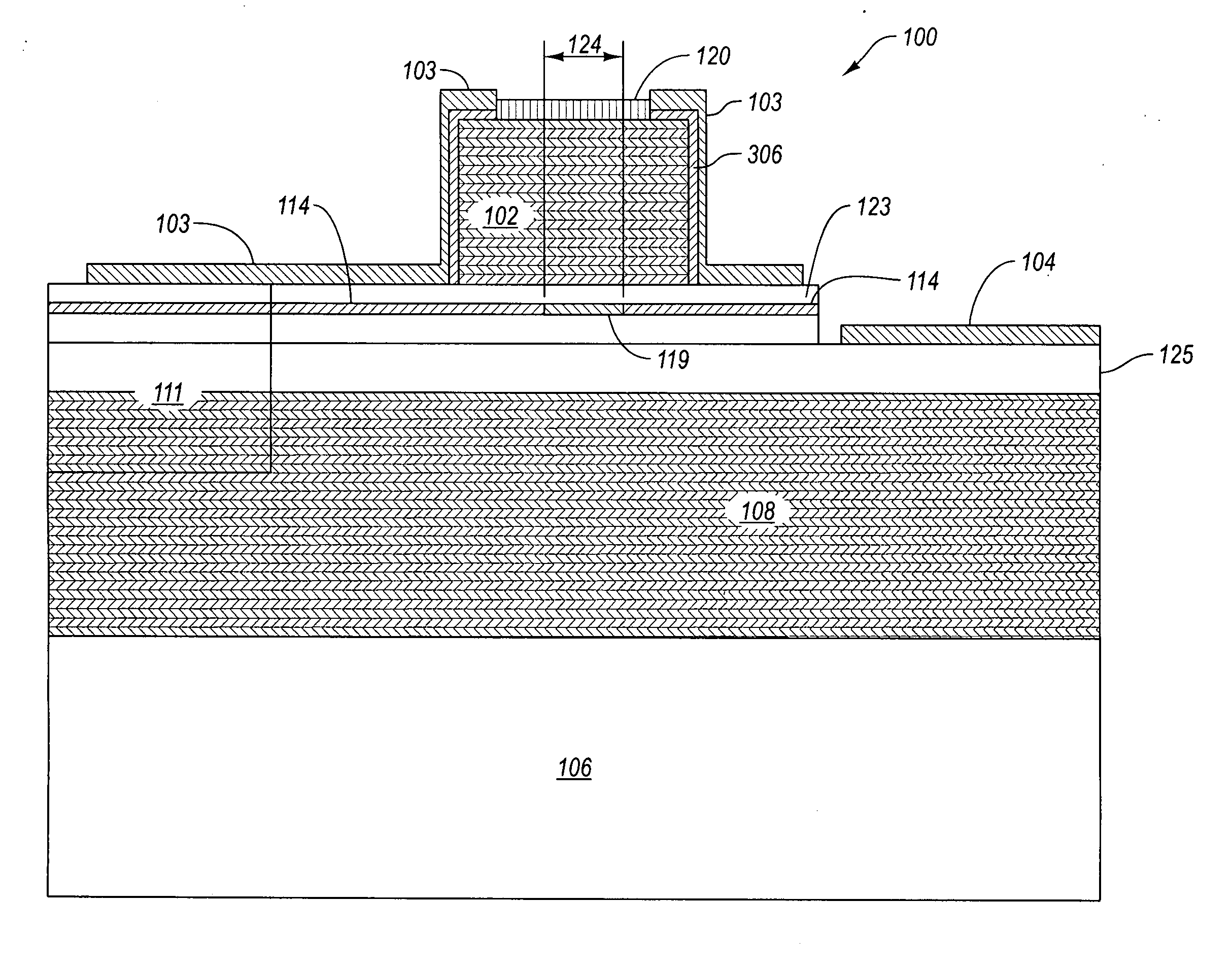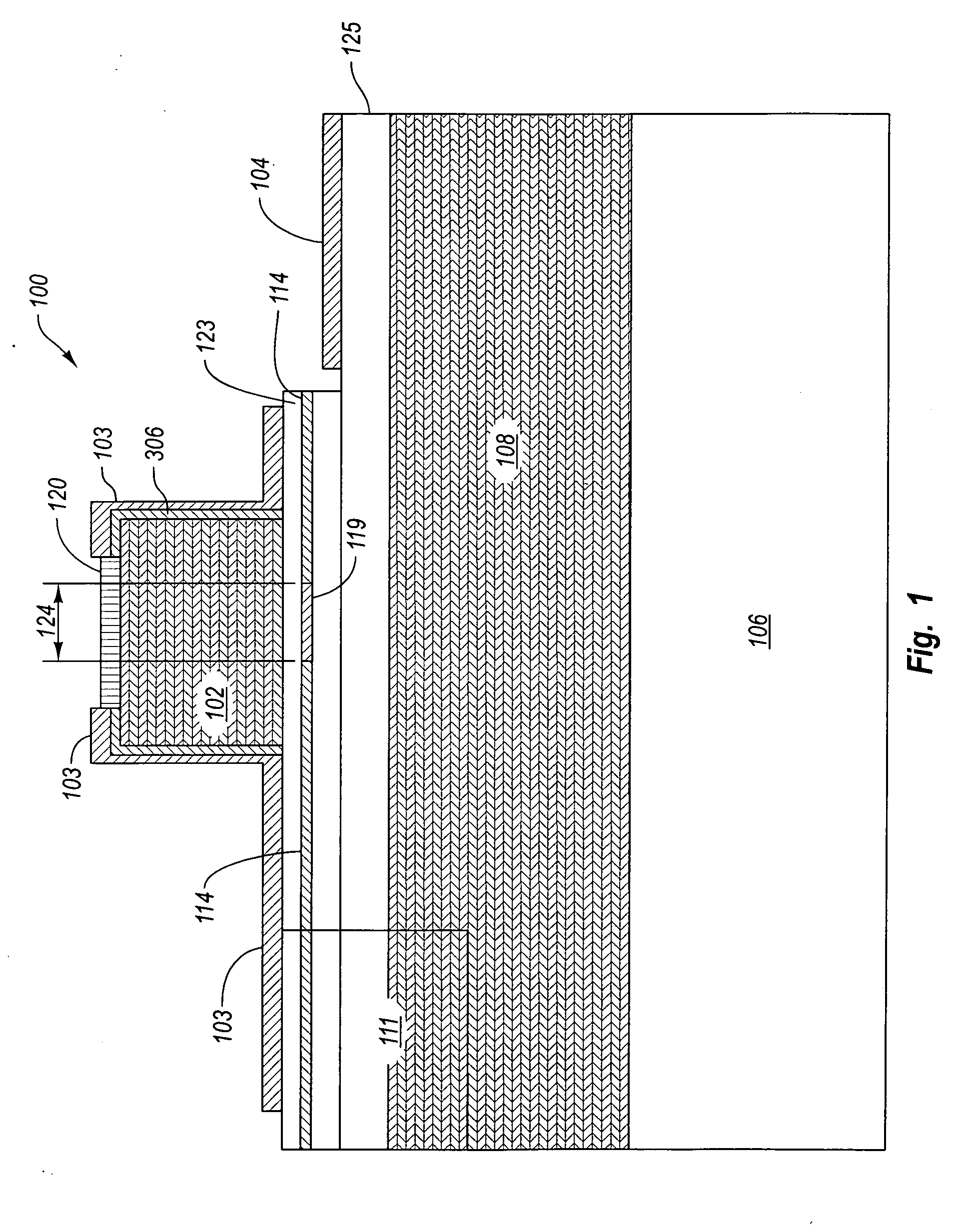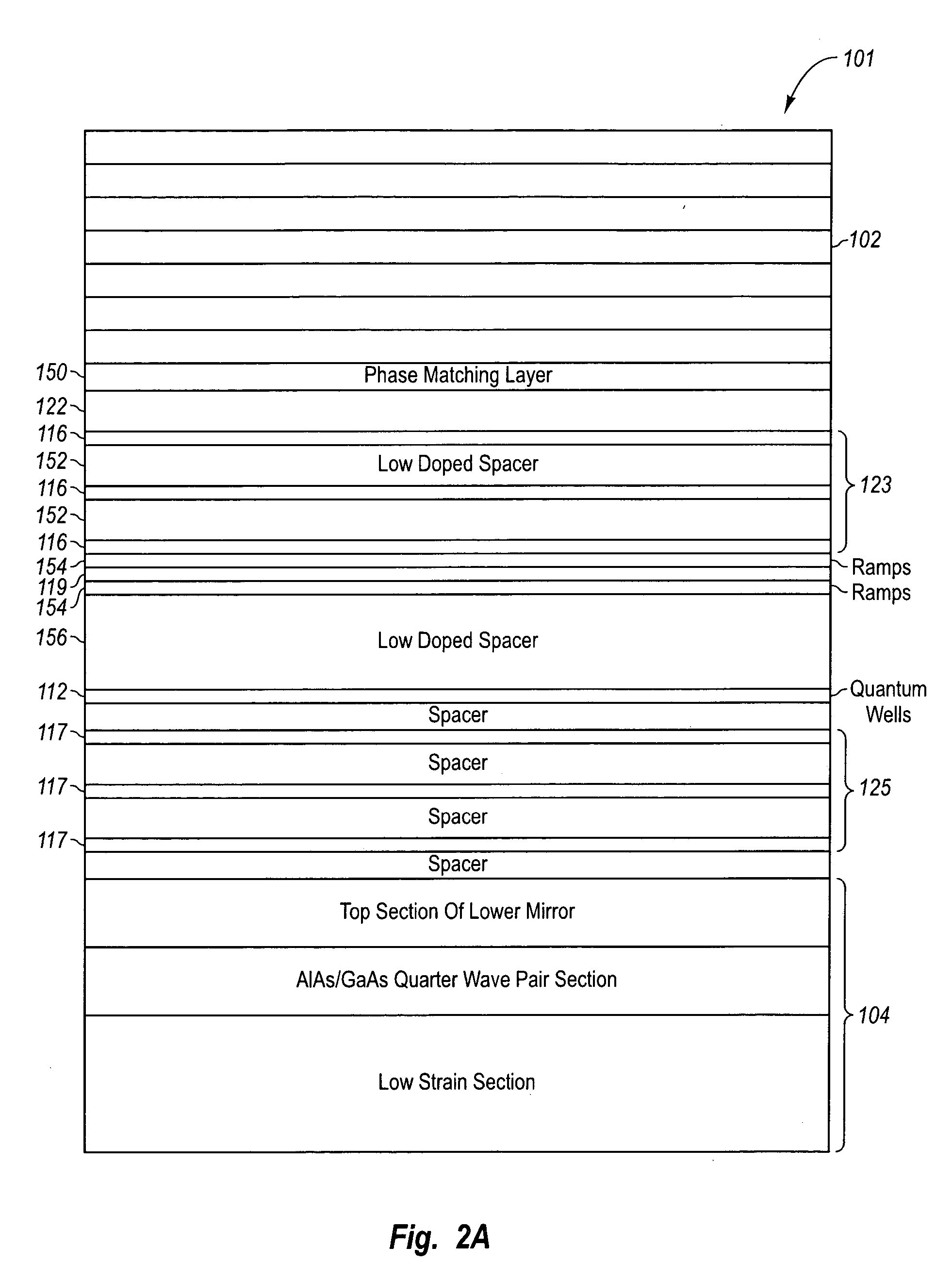Vertical cavity surface emitting laser having multiple top-side contacts
a laser and vertical cavity technology, applied in the field of lasers, can solve the problems of reducing the efficiency of the vcsel, affecting so as to improve the performance of certain parts, and reduce the absorption of free carriers
- Summary
- Abstract
- Description
- Claims
- Application Information
AI Technical Summary
Benefits of technology
Problems solved by technology
Method used
Image
Examples
Embodiment Construction
[0036] To address various problems in long wavelength VCSELS, embodiments described herein are optimized in one or more areas. For example, embodiments may incorporate minimized distances, periodic doping where carriers are placed predominately at the nulls of the optical electric field, minimized low mobility materials, and / or ramps in material compositions that are long enough to use low doping when they are not at nulls and thin higher doped portions when they are at or near nulls.
[0037] One embodiment improves performance of VCSELs at higher wavelengths by reducing or eliminating doping in the mirrors to minimize free carrier absorption and trap related absorption. Dual intracavity contacts can be connected to the active region via conduction layers to provide current to the active region for producing photons. Other layers of the VCSEL structure also use a method of periodic doping where dopants are more heavily concentrated at locations where the electrical field will be at a...
PUM
 Login to View More
Login to View More Abstract
Description
Claims
Application Information
 Login to View More
Login to View More - R&D
- Intellectual Property
- Life Sciences
- Materials
- Tech Scout
- Unparalleled Data Quality
- Higher Quality Content
- 60% Fewer Hallucinations
Browse by: Latest US Patents, China's latest patents, Technical Efficacy Thesaurus, Application Domain, Technology Topic, Popular Technical Reports.
© 2025 PatSnap. All rights reserved.Legal|Privacy policy|Modern Slavery Act Transparency Statement|Sitemap|About US| Contact US: help@patsnap.com



